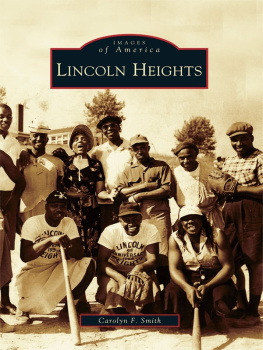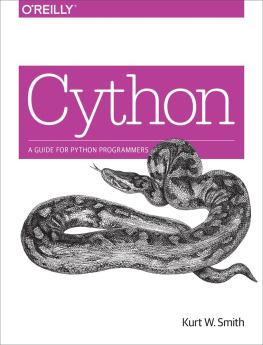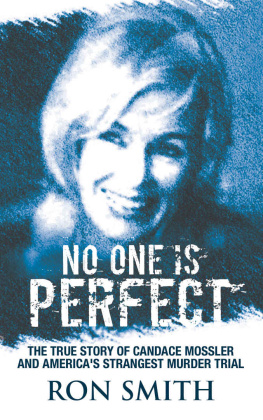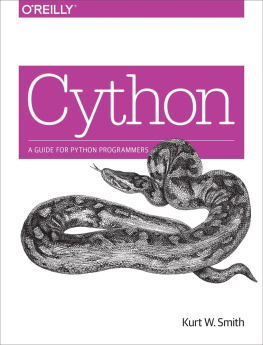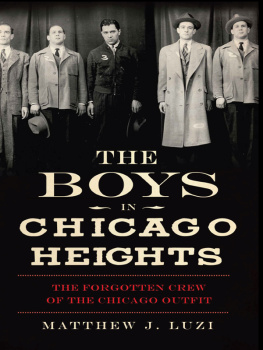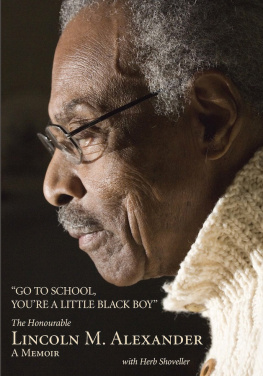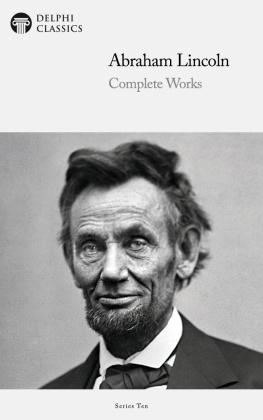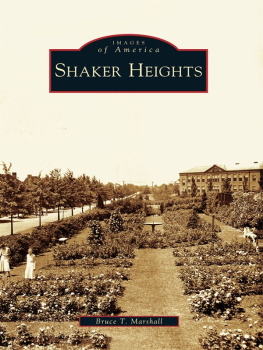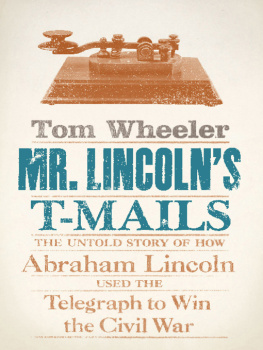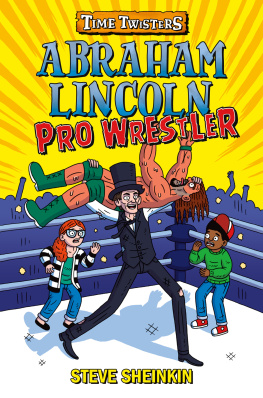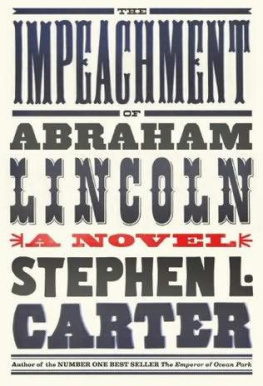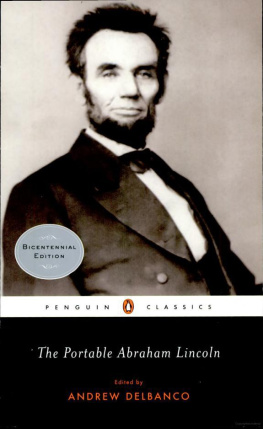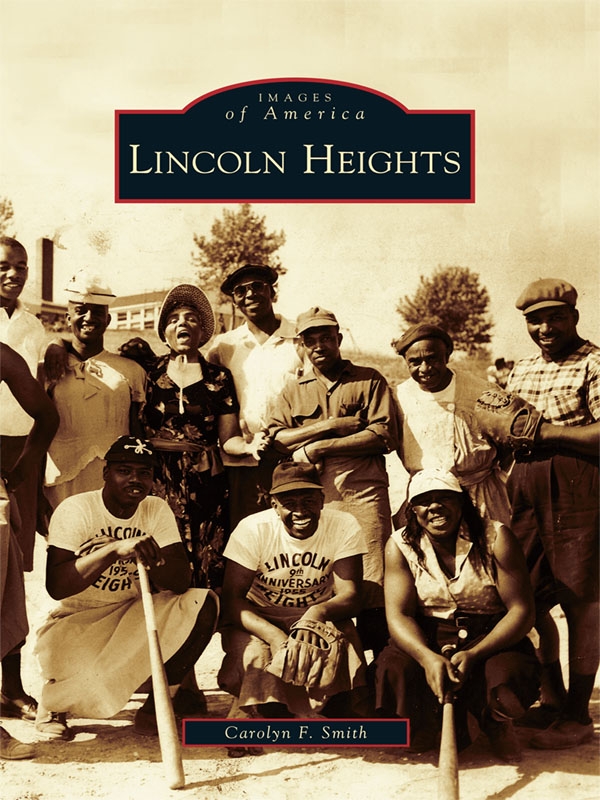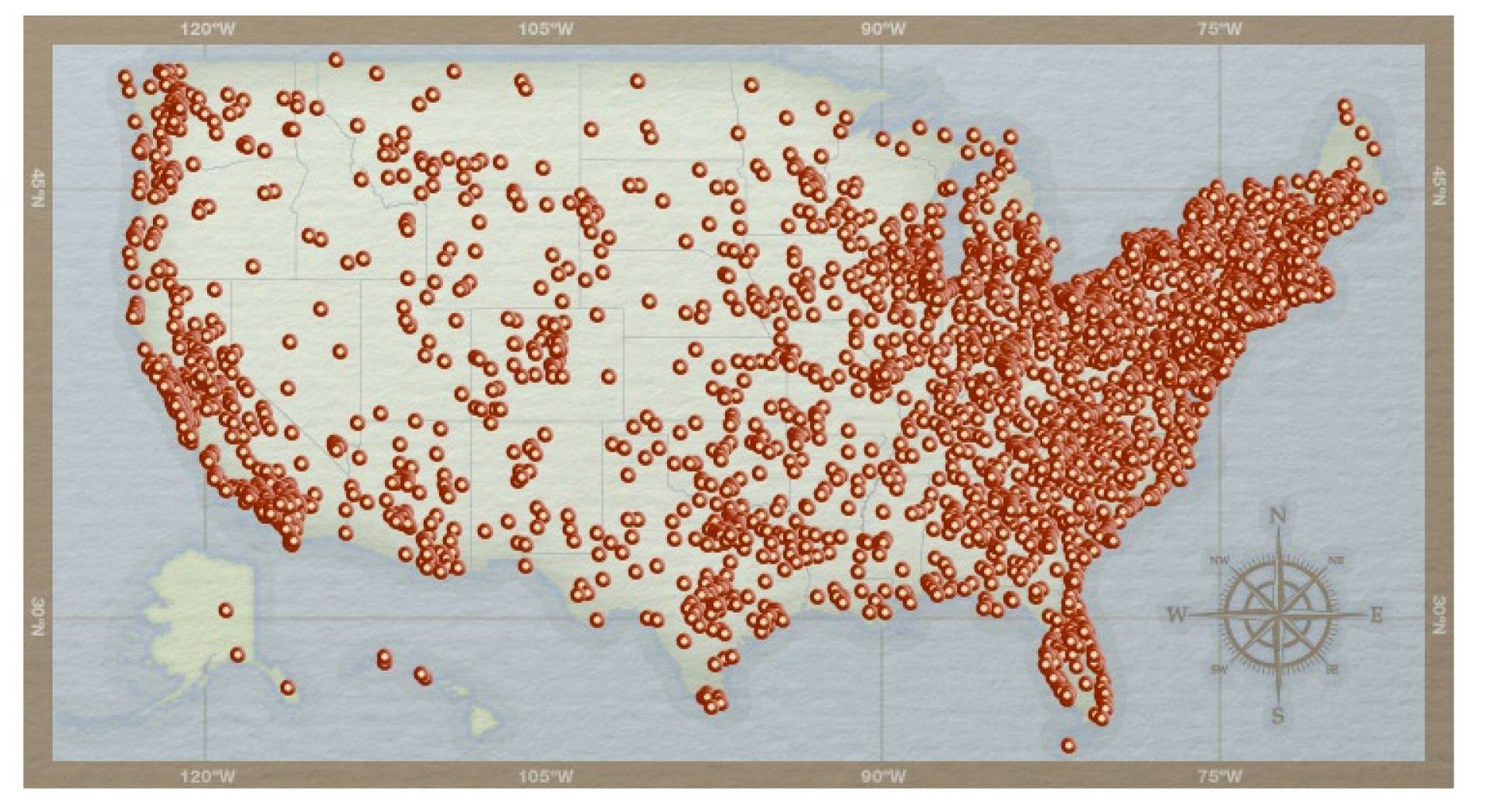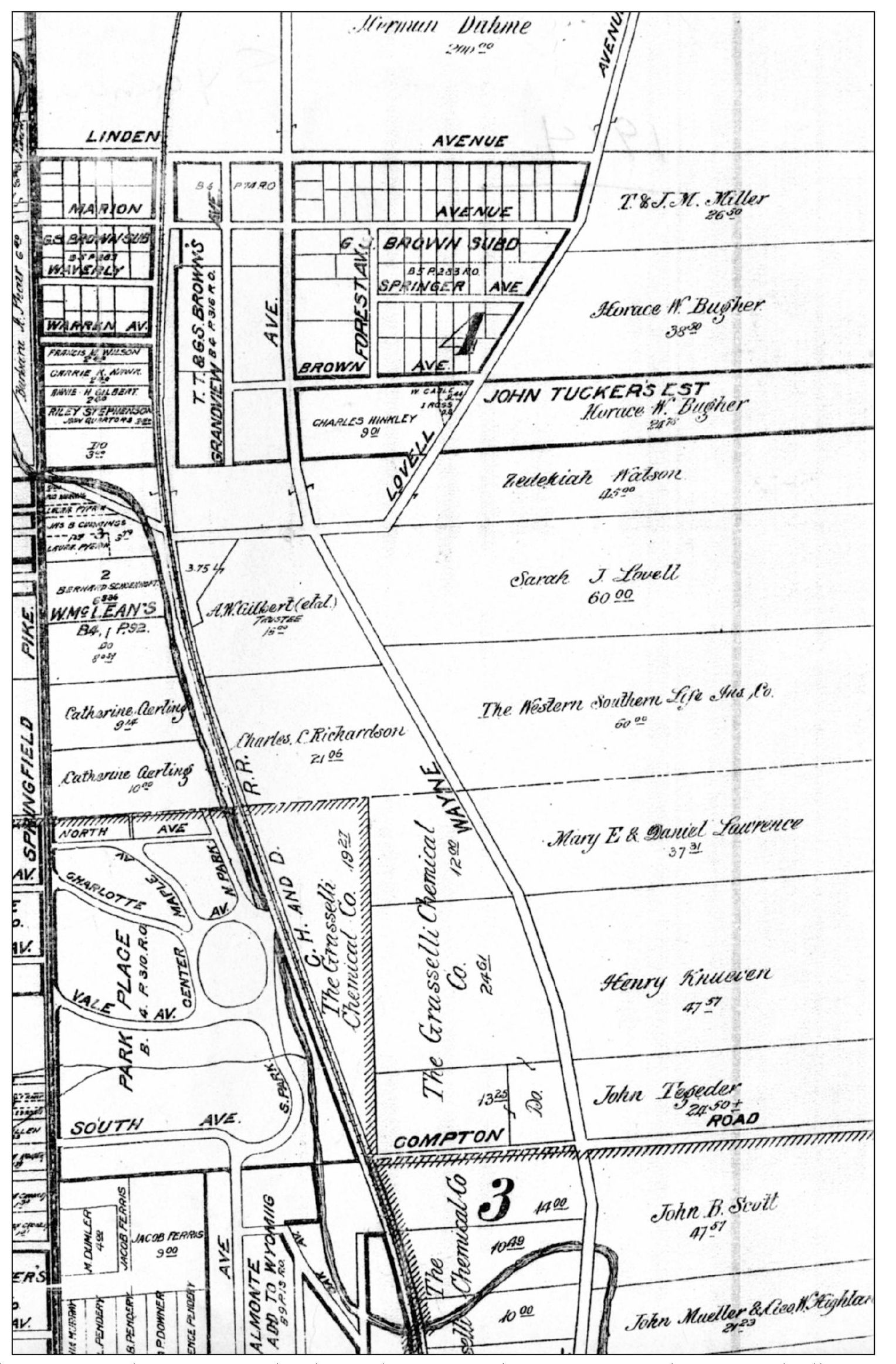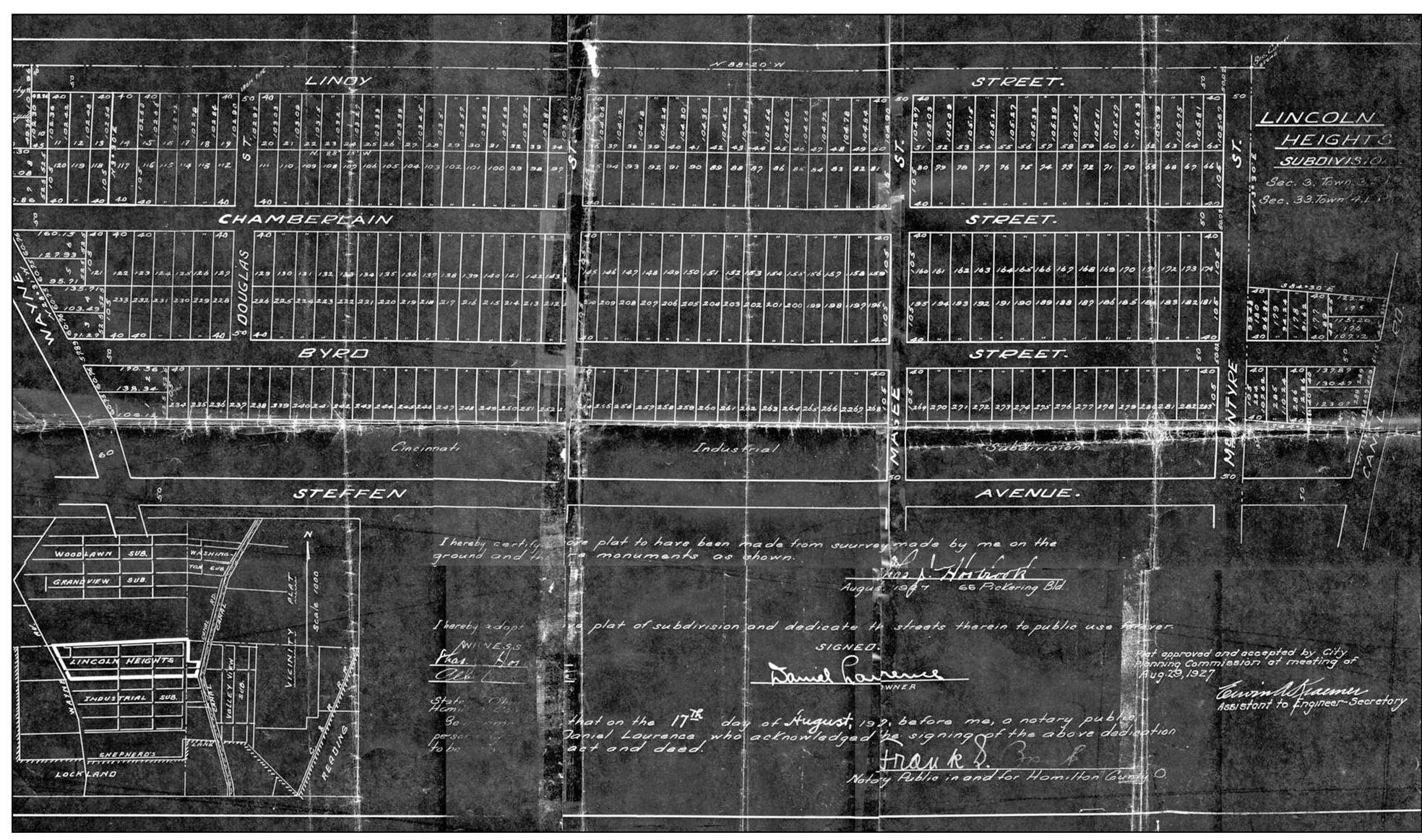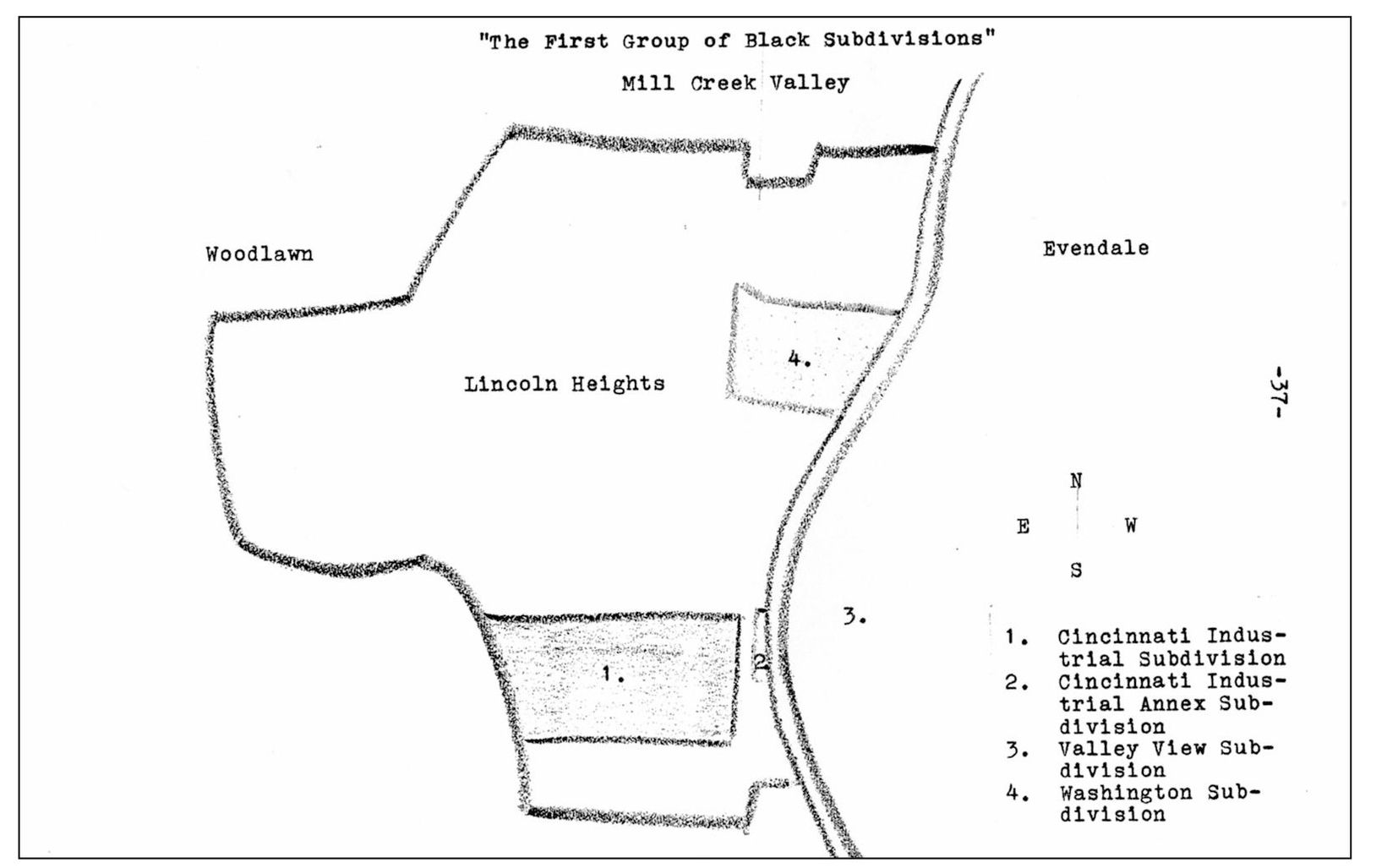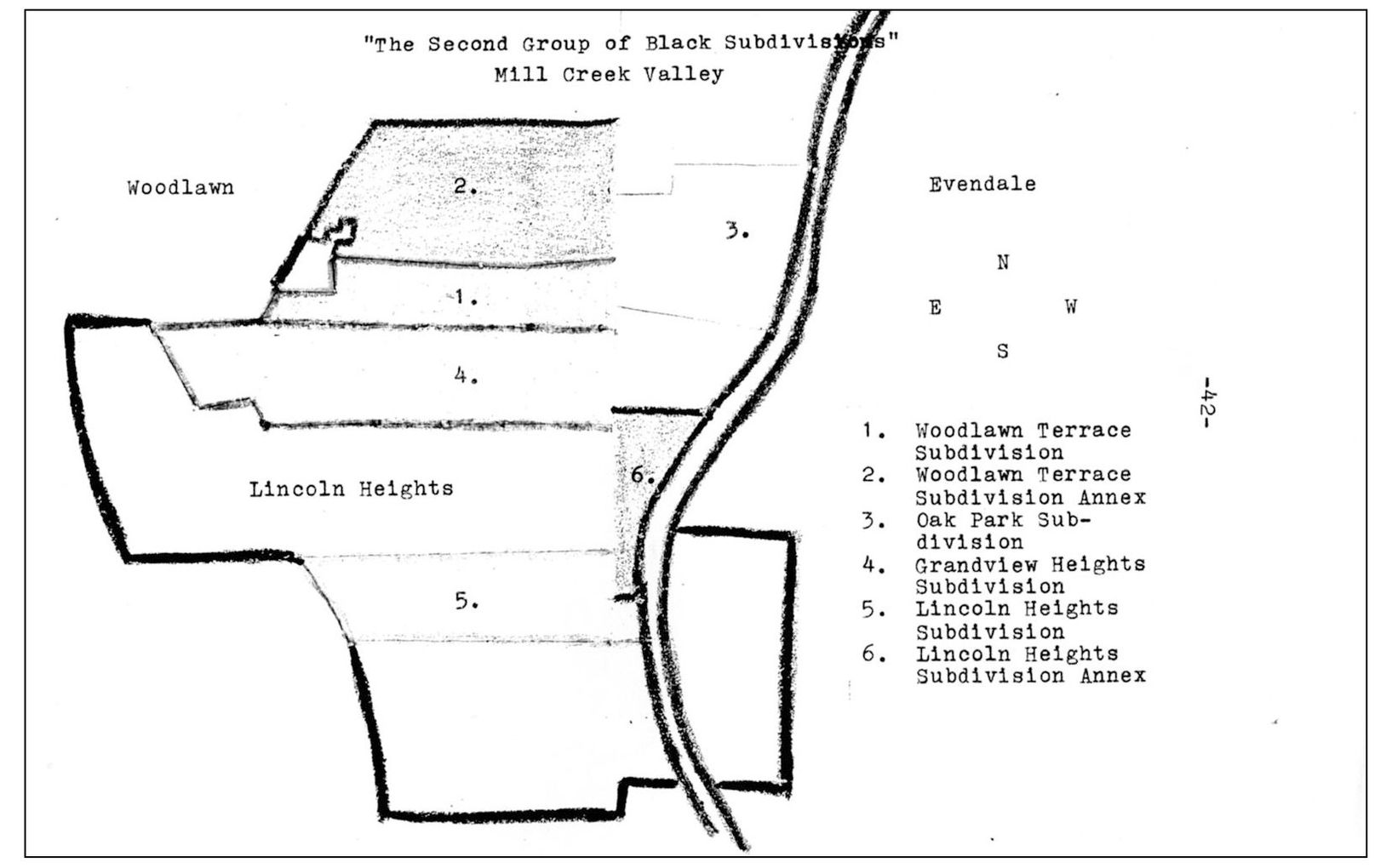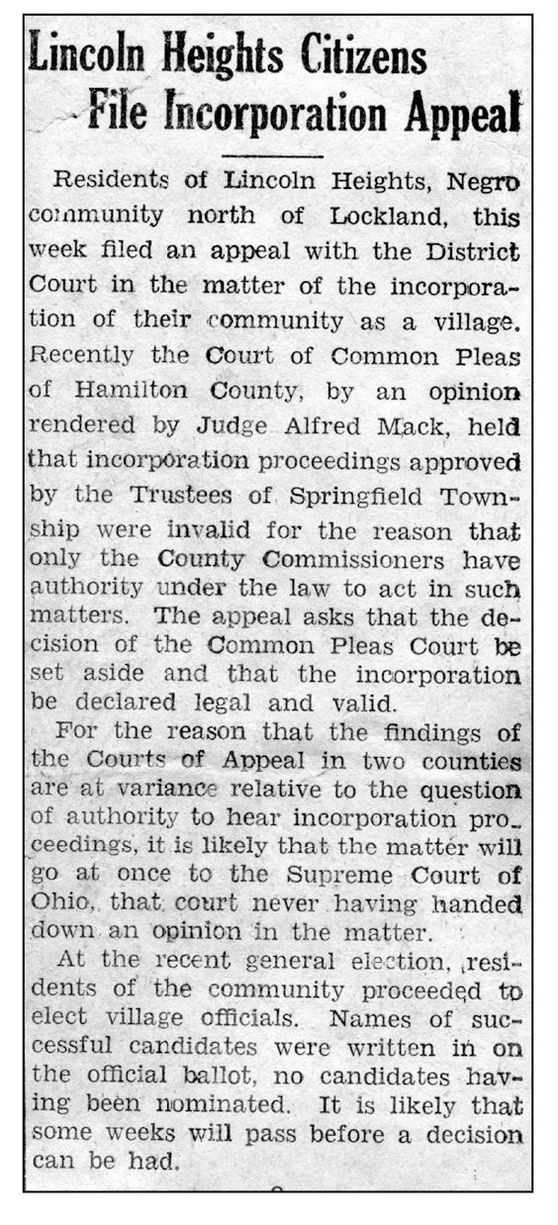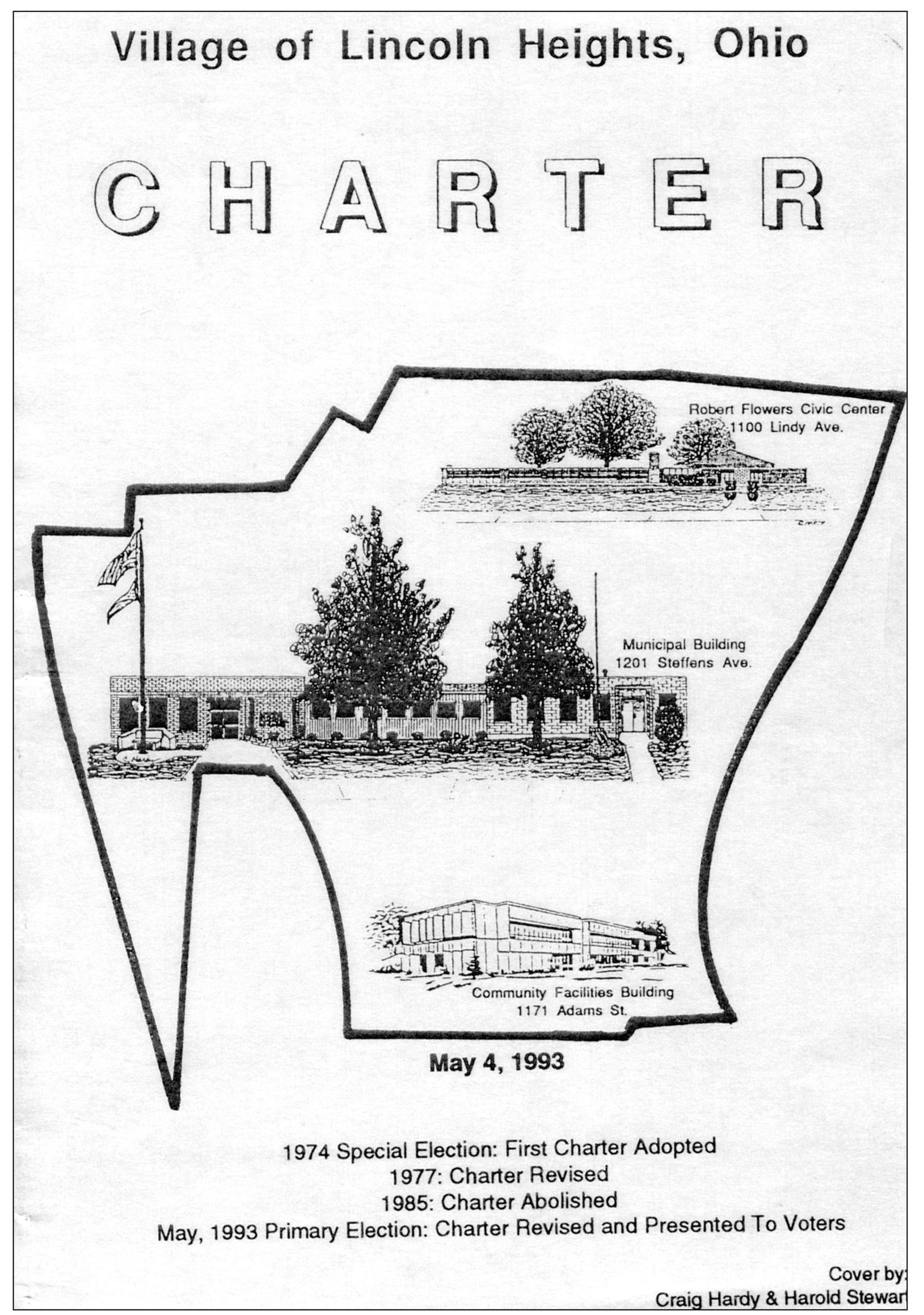One
IN THE BEGINNING
In the beginning, the residential area later named Lincoln Heights was composed of seven all-black subdivisions or communities: the Cincinnati Industrial Subdivision, the Cincinnati Industrial Subdivision Annex, Valley View, the Washington Subdivision, the Oak Park Subdivision, the Grandview Heights, and the Lincoln Heights Subdivision Annex. Several attempts were made to unite the Black Mill Creek Valley subdivisions. Leaders of the movement were James M. Hunter, Rev. Michael J. Mangham, Charles Anderson, William Phillips, Robert Flowers, and Jessie Daniels. The first obstacle was the naming of the community. Only three names were considered: Marianna, after local philanthropist Marianna Matthews; Lincoln Heights, after the countrys 16th president; and Grandview Heights, the largest of the subdivisions.
The first petition to incorporate Lincoln Heights was filed on September 11, 1940, by Eugene Fulton, a young, black Cincinnati lawyer. Five weeks later, three local residents, Helen Collins, Thaddeus Harvey, and Major Zeigler, filed an injunction. Wright Aeronautical Corporation and Defense Plant Corporation plant manager W. W. Finlay testified against the incorporation of Lincoln Heights, stating plant officials had title to the entire Valley View subdivision, which was platted within the limits; the villages current boundaries made it unreasonably large; and Valley View involved no residential buildings.
A third petition was filed on February 22, 1944, without Valley View. On April 5, 1944, the commissioners opened the hearing, which ended with an indefinite postponement. However, the strong determination of the citizens of Lincoln Heights to be self-governing made the commissioners reconsider, and on June 14, 1944, the petition was granted. The county recorder was ordered to hold the petition for 60 days. On the 58th day, an injunction was filed against the incorporation. The petition for incorporation of Lincoln Heights stayed in the Hamilton county courts for five years. The next proceeding on August 22, 1945, was successful, with the Hamilton County Board of Commissioners passing a favorable verdict. Lincoln Heights became the first all-black, self-governing city north of the Mason-Dixon Line.
The 1914 Hamilton County atlas shows plats of townships, incorporated towns, and villages and maps of Greater Cincinnati. (Courtesy of the Public Library Cincinnati and Hamilton County.)
This is a platted map of the Lincoln Heights Subdivision dated August 29, 1927, signed by Charles J. Hosbrook. (Courtesy of the University of Cincinnati Archives and Rare Books.)
Pictured here is the first group of subdivisions of the Mill Creek Valley, consisting of Cincinnati Industrial Subdivision, Cincinnati Industrial Subdivision Annex, Valley View, and the Washington Subdivision, known as the lower subdivision of Lincoln Heights. (Courtesy of the University of Cincinnati.)
This second group of subdivisions of the Mill Creek Valley consisted of Woodlawn Terrace Subdivision, Woodlawn Terrace Subdivision Annex, Oak Park Subdivision, Grandview Heights, Lincoln Heights Subdivision, and Lincoln Heights Subdivision Annex. (Courtesy of the University of Cincinnati.)
This is the original article dated March 1, 1941, from the Cincinnati Enquirer on Lincoln Heights filing incorporation papers to form New Negro Village near Wright Engine Plant. (Courtesy of Jeanette Crawford.)
Here is the original newspaper article about Lincoln Heightss plans for incorporation of the community. (Courtesy of Jeanette Crawford.)

